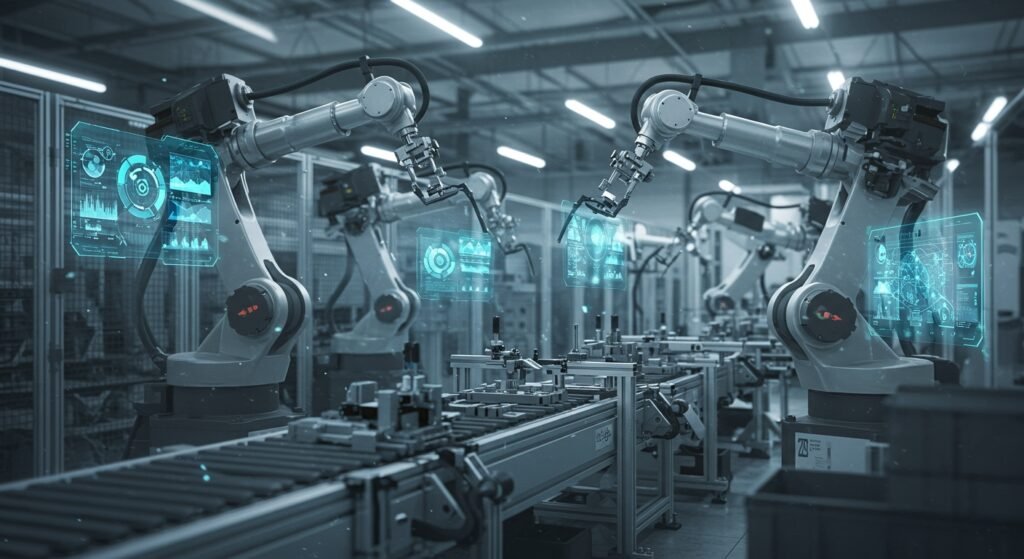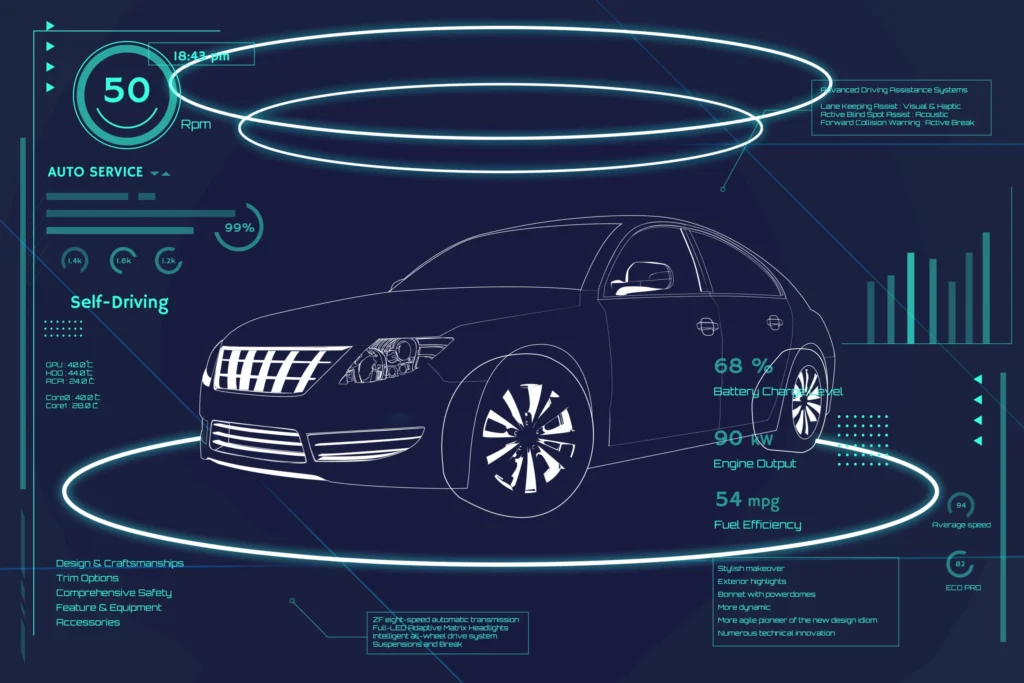The landscape of global industry is undergoing a profound transformation, driven by the relentless march of technological innovation. At the forefront of this revolution is robotics in manufacturing, evolving from simple automated arms to highly intelligent, collaborative systems. This shift is not merely about replacing human labor; it’s about reimagining entire production processes to be more intelligent, swifter, and environmentally conscious. Modern advanced robotics are enabling factories to achieve unprecedented levels of precision, adaptability, and resource efficiency, ushering in an era of truly smarter, faster, and greener manufacturing. From optimizing supply chains to performing intricate tasks with microscopic accuracy, these robotic systems are redefining what’s possible on the factory floor.
Table of Contents
- The Evolution of Robotics in Manufacturing
- Smarter Production: AI and Machine Learning Integration
- Faster Operations: Boosting Efficiency with Advanced Robotics in Manufacturing
- Greener Factories: The Sustainability Advantage
- Challenges and the Road Ahead
The Evolution of Robotics in Manufacturing
Once a futuristic concept, robotics has steadily integrated into the industrial mainstream. Early industrial robots were bulky, single-task machines, often caged for safety due to their limited sensory capabilities. Their primary role was to automate repetitive, dangerous, or ergonomically challenging tasks.
From Basic Automation to Smart Systems
Today, the scenario is dramatically different. We’ve moved beyond mere automation to intelligent autonomy. Modern robots, equipped with advanced sensors, vision systems, and AI, can learn, adapt, and even collaborate safely with human workers. This leap allows for greater flexibility in production lines, mass customization, and rapid response to market demands, moving away from rigid, fixed automation towards dynamic, reconfigurable systems.
Smarter Production: AI and Machine Learning Integration
The true “smarter” aspect of advanced robotics comes from its seamless integration with artificial intelligence and machine learning. These technologies empower robots to interpret complex data, make real-time decisions, and continuously optimize their performance. This data-driven approach leads to higher quality output and significantly reduced errors.
Predictive Maintenance and Quality Control
AI-powered robots can analyze operational data to predict equipment failures before they occur, scheduling maintenance proactively and minimizing costly downtime. Similarly, integrated vision systems can perform instantaneous quality checks with a precision unmatched by human inspection, identifying defects early in the production cycle. This proactive intelligence extends the lifespan of machinery and ensures consistently high product quality.
Faster Operations: Boosting Efficiency with Advanced Robotics in Manufacturing
Speed and efficiency are paramount in competitive manufacturing, and advanced robotics in manufacturing delivers on both fronts. Collaborative robots (cobots), for instance, can work alongside humans without safety barriers, streamlining assembly processes and reducing cycle times. Swarms of smaller, mobile robots can transport materials and components across vast factory floors with optimal routing algorithms, significantly improving logistics.
| Metric | Traditional Manufacturing | Advanced Robotics | Improvement (%) |
|---|---|---|---|
| Production Throughput | 100 units/hour | 250 units/hour | 150 |
| Error Rate | 2.5% | 0.1% | 96 |
| Downtime (planned) | 15 hours/month | 5 hours/month | 66 |
| Energy Consumption | High | Medium-Low | Variable |
The data clearly illustrates the tangible benefits. For a deeper dive into modern production techniques, consider exploring our insights on industrial automation trends.
Greener Factories: The Sustainability Advantage
Beyond speed and intelligence, advanced robotics plays a crucial role in achieving greener manufacturing processes. Optimized resource utilization and waste reduction are inherent benefits of precise, efficient robotic operations.
Energy Efficiency and Waste Reduction
Modern robotic systems are designed for energy efficiency, utilizing lighter materials and sophisticated motion controls that consume less power. Their accuracy minimizes material waste, reducing scrap rates and the need for rework. Furthermore, their ability to handle hazardous materials safely and efficiently contributes to a cleaner work environment and less environmental pollution. Companies are increasingly adopting these technologies to meet sustainability goals and comply with stricter environmental regulations. For more information on sustainable practices in industry, check out the resources provided by the United Nations Industrial Development Organization.
Challenges and the Road Ahead
While the benefits are clear, adopting advanced robotics isn’t without its challenges. Initial investment costs can be substantial, and the need for a highly skilled workforce to program, maintain, and integrate these complex systems is growing. Cybersecurity also becomes a critical concern as more interconnected devices enter the network. However, ongoing advancements in AI, sensor technology, and more user-friendly interfaces are continually lowering these barriers. The future promises even more autonomous and versatile robots, capable of handling an even wider array of tasks, further blurring the lines between human and machine capabilities in a harmonious, productive ecosystem.
Conclusion
Advanced robotics in manufacturing is not just an incremental improvement; it’s a paradigm shift. By embracing smarter, faster, and greener production methods, industries can unlock unprecedented levels of productivity, quality, and environmental stewardship. The journey towards fully autonomous and intelligent factories is still underway, but the foundational technologies are already here, reshaping the industrial world for a more efficient and sustainable future.


